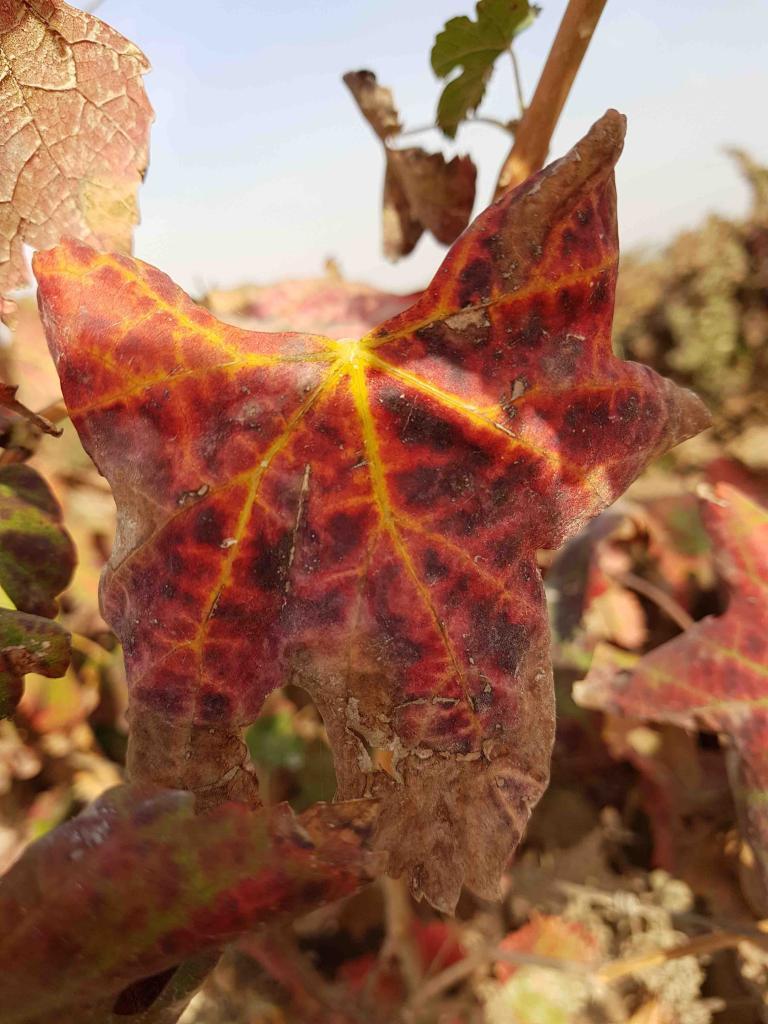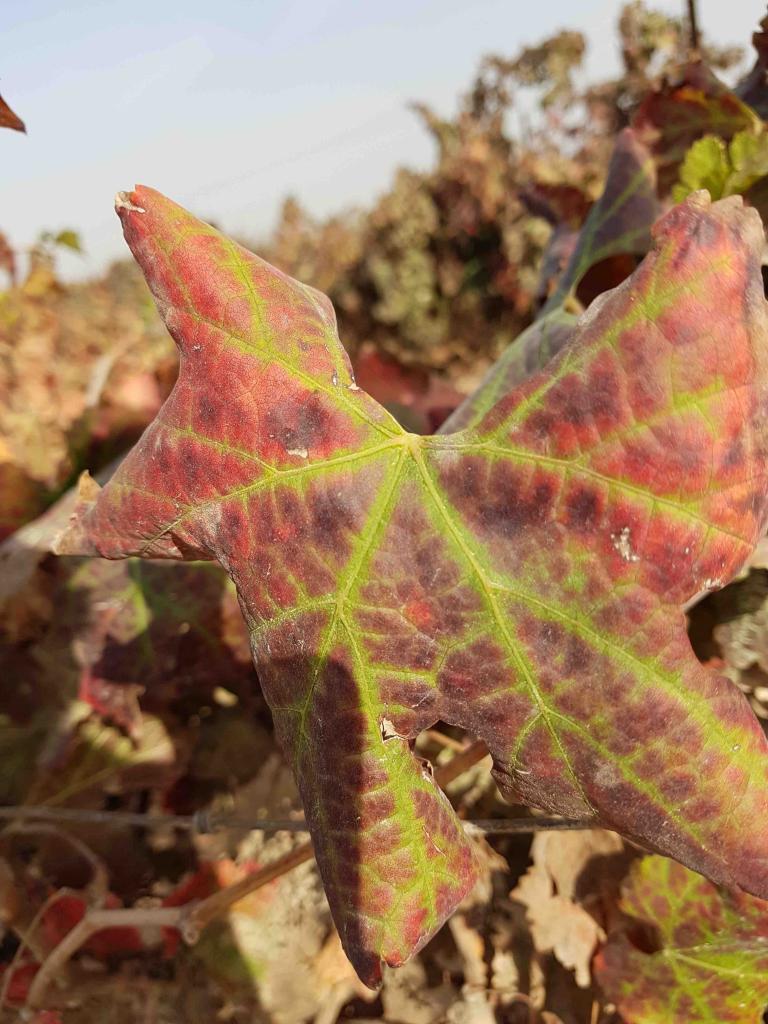Enfermedad del enrrollamiento de la vid
Grapes
Grapevine leafroll disease is actually a group of viruses found throughout the world. The disease is transmitted by the grapevine mealybug called planococcus ficus. Approximately one hour of feeding upon infected vines is enough for mealybugs to contract the virus.
Mealybugs lose the ability to infect new vines with grapevine leafroll disease after four days of contracting it. The virus does not transfer from the adult female to her offspring.
The movement of mealybugs in the vineyard is partially independent and partially passive (with the aid of ants), which could explain some of the spreading patterns. The virus tends to first spread from one infected vine to another vine in the same row. The introduction of the disease to different adjacent rows takes place later on. Introduction of the disease in healthy, virus-free vineyards is caused by the mealybug vector.
Vines infected with the disease exhibit a reduction in the quantity and quality of fruit that comes from an overall decrease in the contents and accumulation rates of sugars. Generally speaking, wine grape varieties are found to be less tolerant to the effects of the disease; therefore, wine grape varieties suffer significant yield losses.
The symptoms vary in red and white varieties. In red varieties, it is common to see interveinal reddening of the leaves, a state when leaves become red though the veins remain green. In white varieties, the symptoms are fewer and less defined such that it may include mild chlorosis and curling of leaf edges. In some cases, symptoms aren’t clear enough.
Quick tip: It is easy to confuse symptoms of the virus with those of magnesium deficiency. There is no treatment for the virus; therefore, it is not possible to cure a diseased vine.
No hay tratamiento para los virus. Las plantas infectadas con el virus deben eliminarse del campo y destruirse lo antes posible. Dado que el virus ya podría haberse diseminado antes de que aparecieran los síntomas, el enfoque debe estar en la prevención.
Use técnicas de monitoreo de plagas (como las trampas) para ayudar a mantener un registro de la población de insectos.
Los productos que se utilizan en una o más partes del mundo pueden contener los siguientes ingredientes:
Sulfoxaflor, imidacloprid, thiamethoxam, acetamiprid, tiacloprid, dichlorvos, chlorpyrifos, Spirotetramat, Buprofezin, y Extracto sintético de terpenos de Chenopodium.
aceite de neem, aceite de árbol de té, aceite mineral y detergentes. Jabones diseñados especialmente para uso agrícola.
*Names marked in red are considered to be highly poisonous to beneficial insects.
*Names marked in green are considered to be organic and IPM (integrated pest management) compatible.
Galería de imágenes

